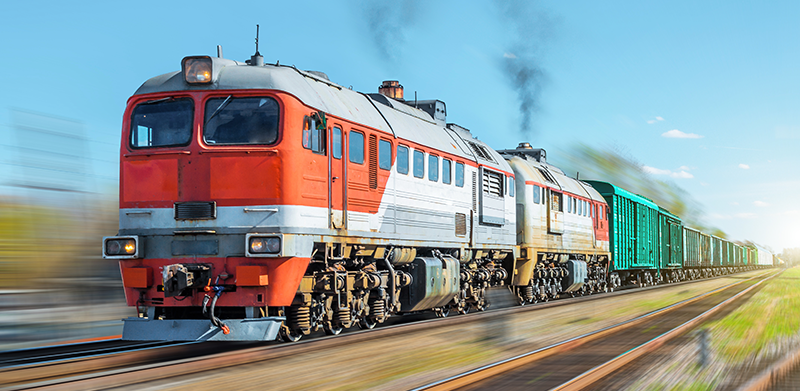Security concerns are ramping up in the freight rail industry. Just this month, congestion, global supply chain challenges and a decrease in Union Pacific’s private police force came to a head in southern California, where “railroad tracks in the heart of Los Angeles (were) buried in a blizzard of debris, as scavengers picked at what was left behind by thieves who broke into cargo containers on idle trains,” reported The Los Angeles Times.
“Last week’s thefts raised questions about how a key element of the supply chain could be so vulnerable.” (LA Times)
The Times reported that southern California is a global hub for cargo in this e-commerce age, and train cars filled with valuable goods are crisscrossing hundreds of miles of tracks at all hours. It said supply chain congestion sometimes causes freight trains to sit idle, leaving them vulnerable to thieves in urban rail yards.
A shortage of police personnel is an issue in itself, but how can technology help rail operators bridge the gap? One answer is a robust, end-to-end security and surveillance toolkit.
What should an end-to-end security and surveillance toolkit include?
First up are tools for detection, for everything from railyards to tunnel entrances. Modern smart 3D surveillance systems can immediately determine threats versus non-threats. If an intruder or object enters a guarded area, operators receive data based on the exact location, size, speed and trajectory. Large objects like trains and smaller objects such as animals can be ignored, reducing false alarms.
Next is assessment technology. A physical security information management (PSIM) solution can help sift through the noise of disparate systems by integrating data from 3D surveillance tools, along with data from other alarms, sensors, video, IoT and intrusion devices, to provide real-time situational awareness, centralizing security operations and detection inputs into a common operating picture.
Response tools are another vital component. When assessment technology is linked to computer-aided dispatch (CAD) solutions, responders can be dispatched as needed.
Adding to your toolkit is the collaboration component. Sometimes, rail operators have to work with other agencies, and at times city, state or regional governments, when cross-functional collaboration, shared awareness and coordinated action are necessary for the best possible outcomes. Modern collaborative workspaces allow rail security operators to share data and coordinate action among diverse teams, build dashboards on the fly and share those dashboards with other organizations and agencies.
Rounding out your toolkit is a framework that leverages disruptive technologies that address critical IoT points of leverage: enterprise integration, cloud orchestration, data visualisation, built-in mobility, intelligent edge connectivity and artificial intelligence (AI) everywhere. It can interface with diverse data types, such as sensors, video management systems, alarms and assets, as well as the message formats used across your rail network.
This end-to-end security toolkit enables the complete security lifecycle management for today’s rail networks.
Lifecycle management helps reach KPIs
Poor mitigation and management of unplanned rail disruptions (URDs) impact strategic KPIs for rail providers, including capacity, revenue, safety and, the often-cited top KPI: customer satisfaction. Whether dealing with security incidents, asset failures or weather hazards, rail operators’ priorities include protecting passengers and personnel and safeguarding critical infrastructure and property while restoring normal railway operations as quickly as possible.
Complete security lifecycle management with an end-to-end security toolkit can help tackle those KPIs. By seamlessly and bidirectionally integrating and connecting railway infrastructure, assets and people, these technologies aid in reducing travel time and costs, while increasing reliability and trust among customers.
“We expect dependence on rail for moving freight and people to increase tremendously over the next 10-20 years,” said Hexagon’s Chelsea Kauchick. “As traffic grows, it is inevitable that networks will see an increase in rail disruptions with a greater threat for miscommunication and overlooked security details. That’s why it’s so crucial to invest in communication and data integration solutions in tandem with a network’s security solution(s). Hexagon’s Security & Surveillance portfolio incorporates best practices for communication and data integration so security teams can detect and respond to incidents faster while maintaining or increasing the satisfaction level expected from future customers.”
Learn more
Ready to get on track? Find out more about Hexagon’s Security & Surveillance portfolio for rail.
Mark your calendar!
We’re preparing now for HxGN LIVE Global 2022. Join us in-person (or online) June 20-23 in Las Vegas for a tailored, hybrid event experience to discuss, debate and encounter the autonomous future.
Enjoy this post? Subscribe to our blog and have industry insights delivered right to your inbox each week. Subscribe now.















